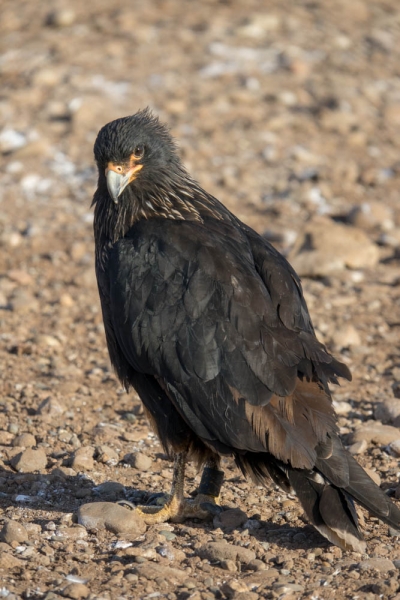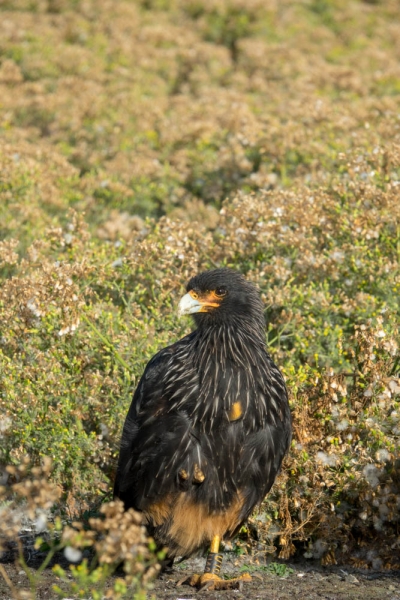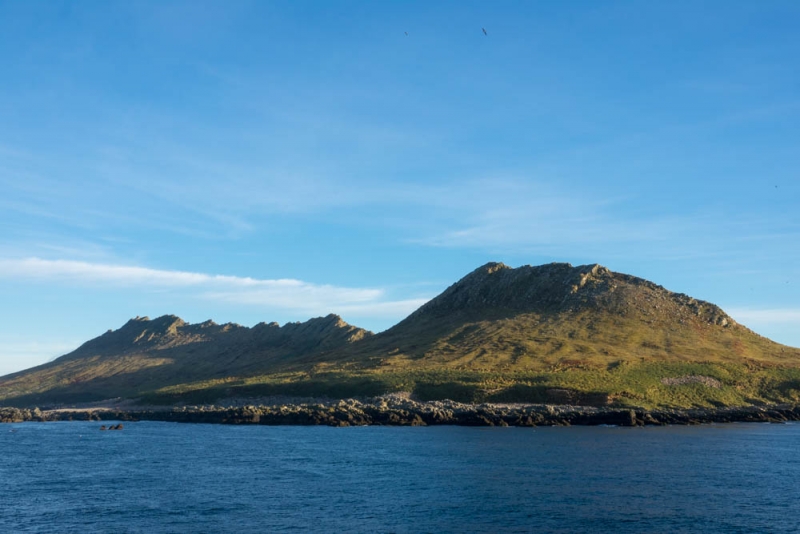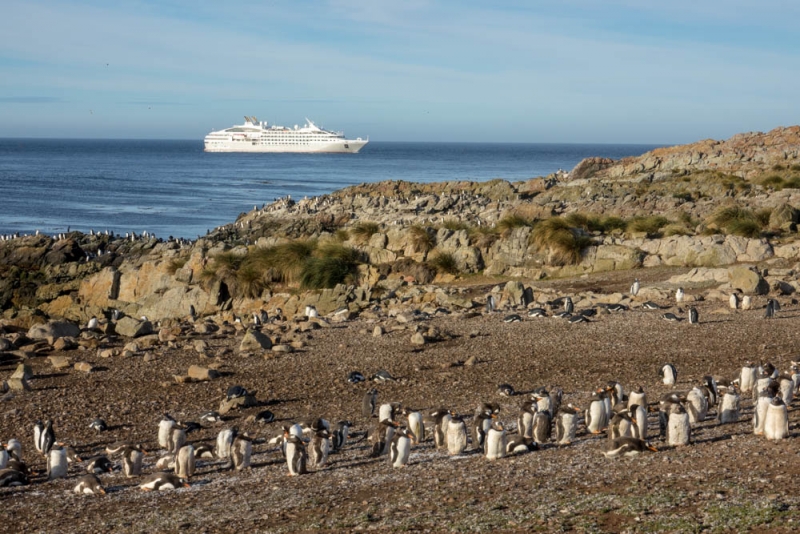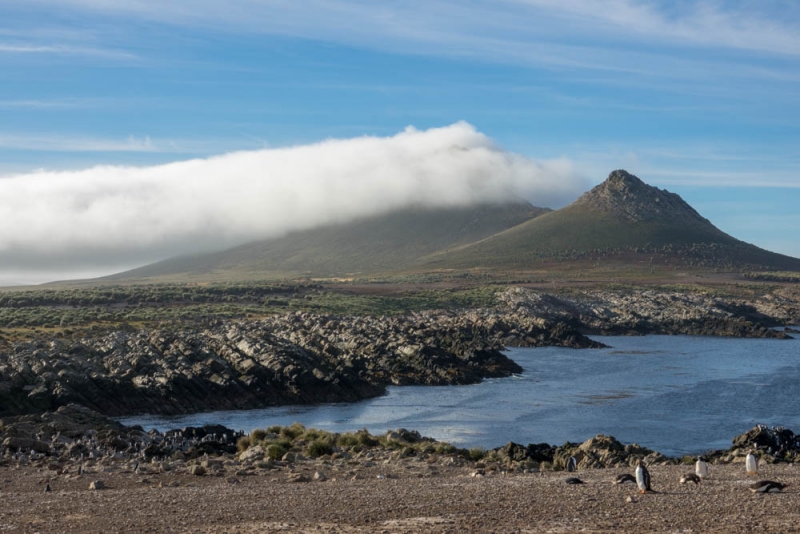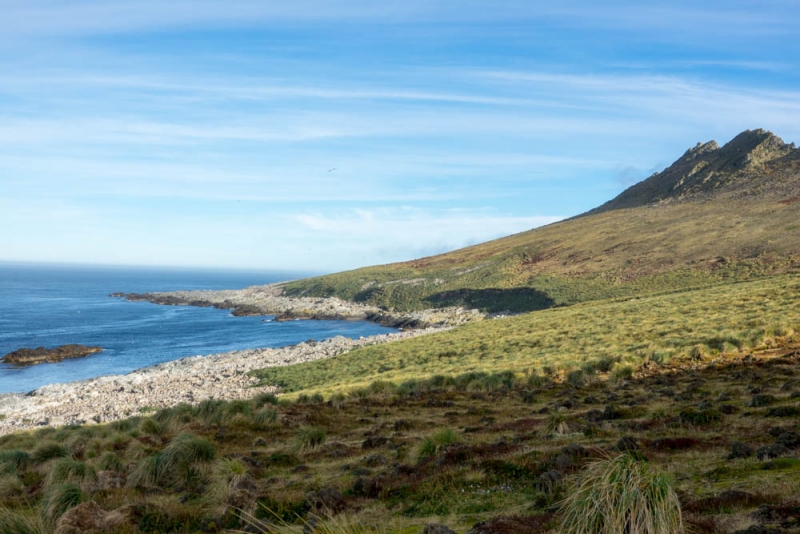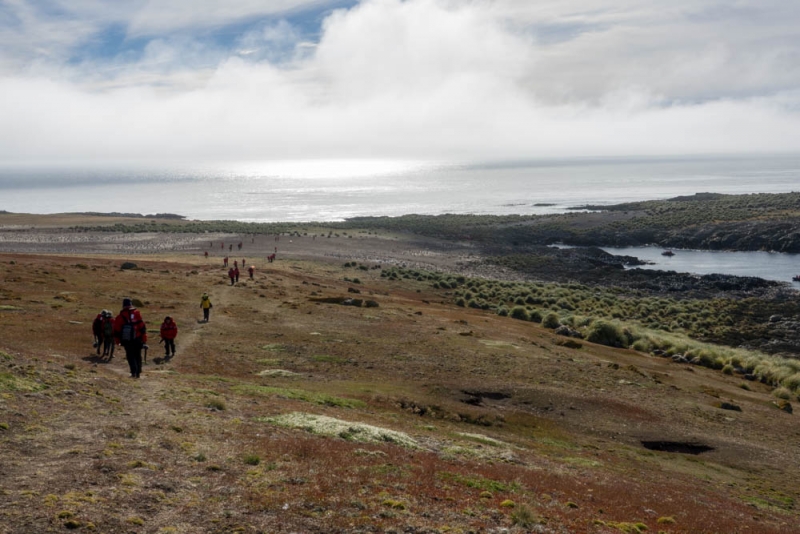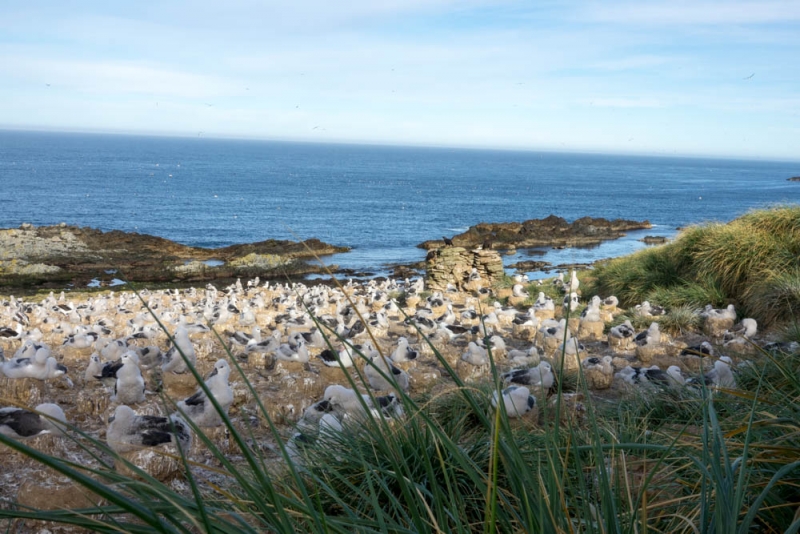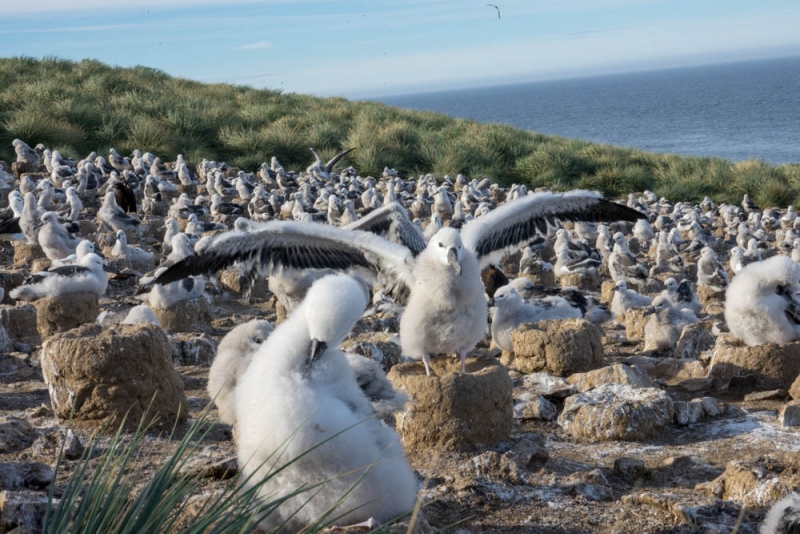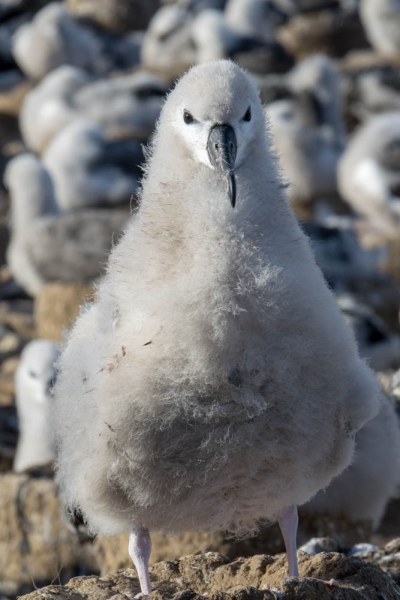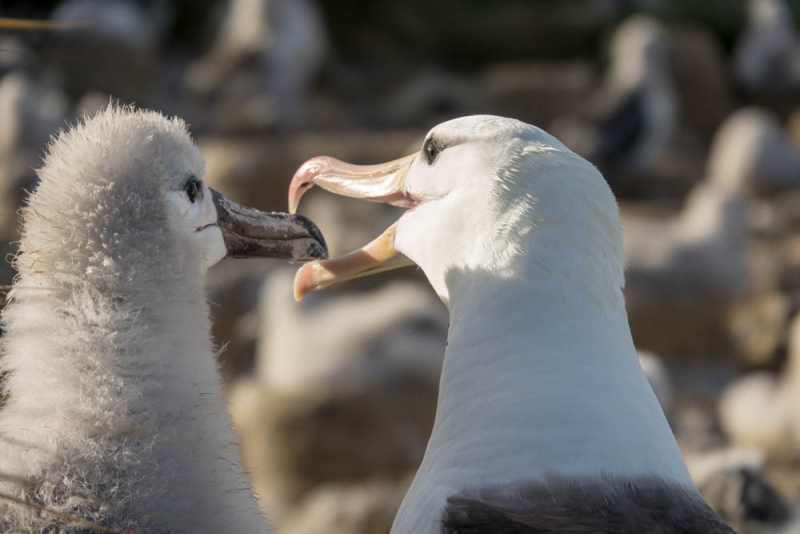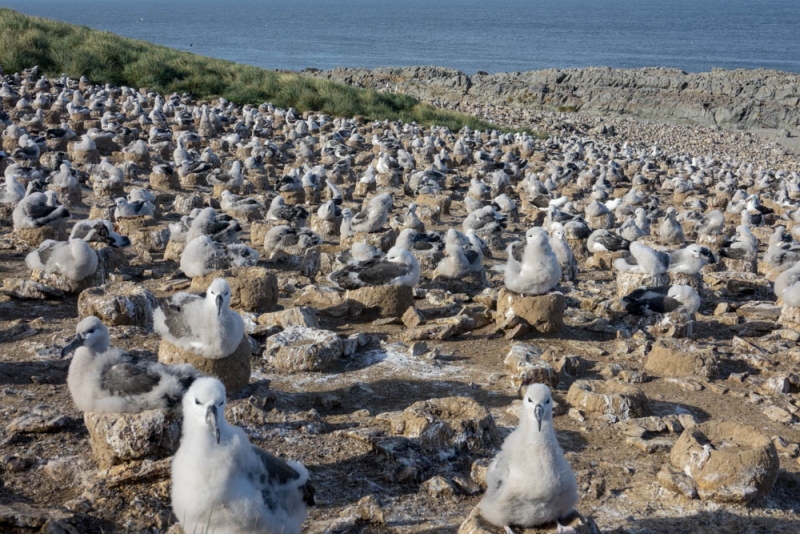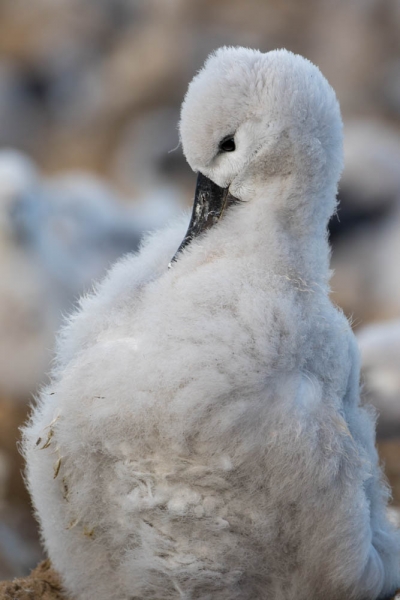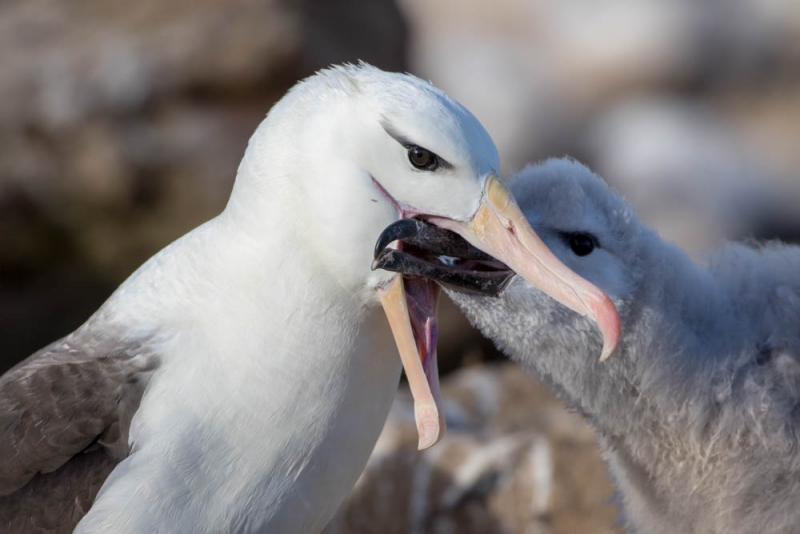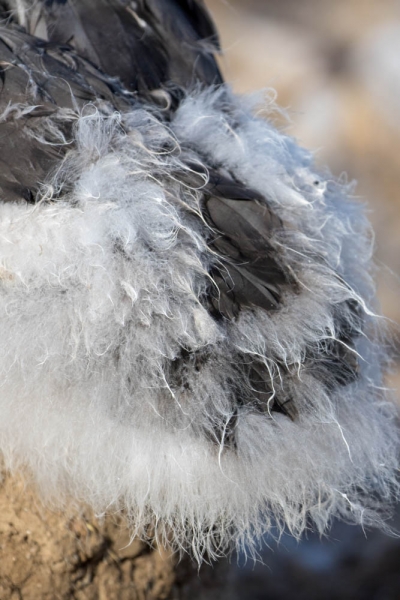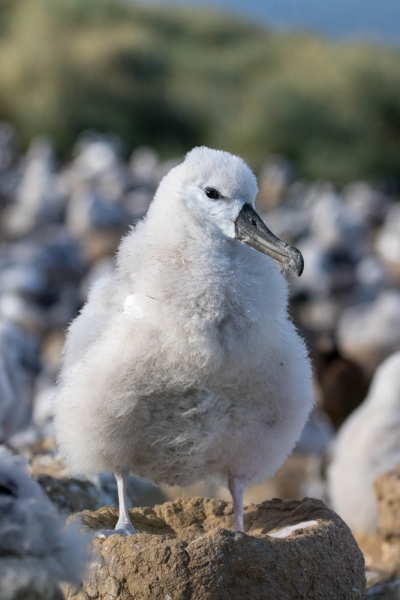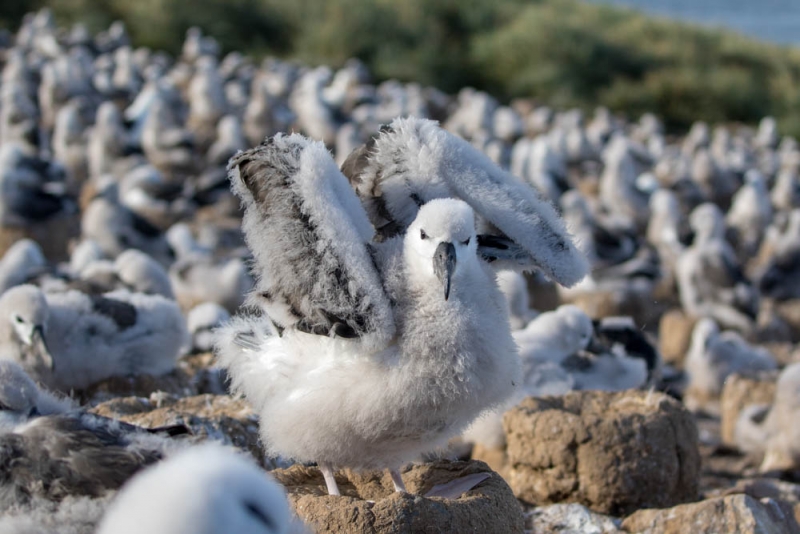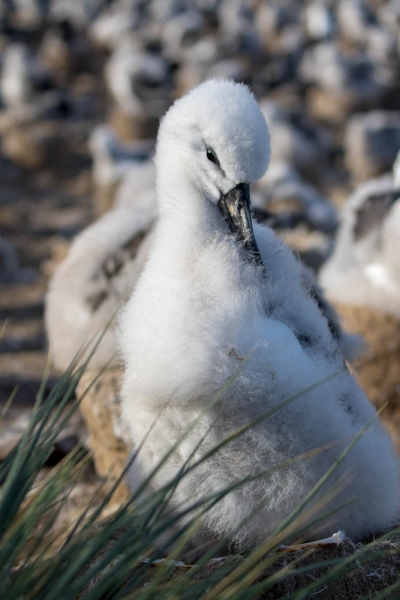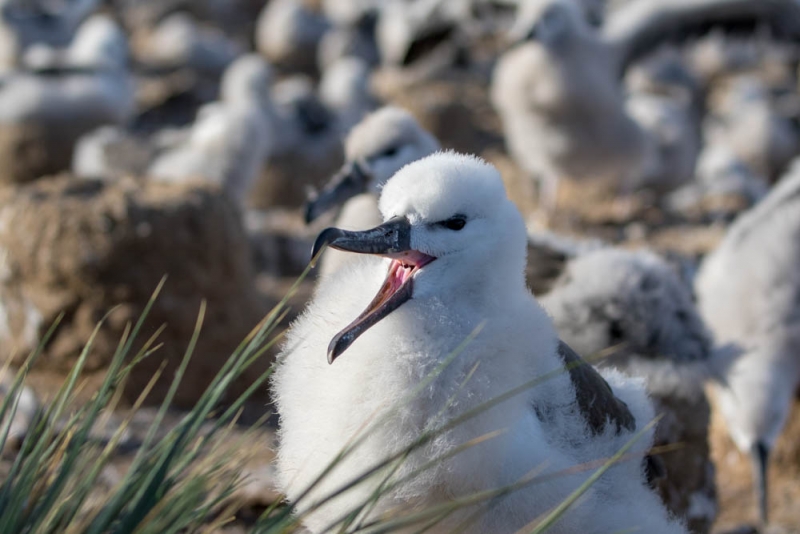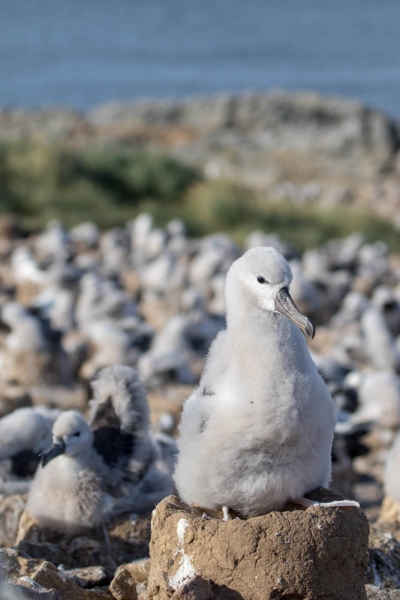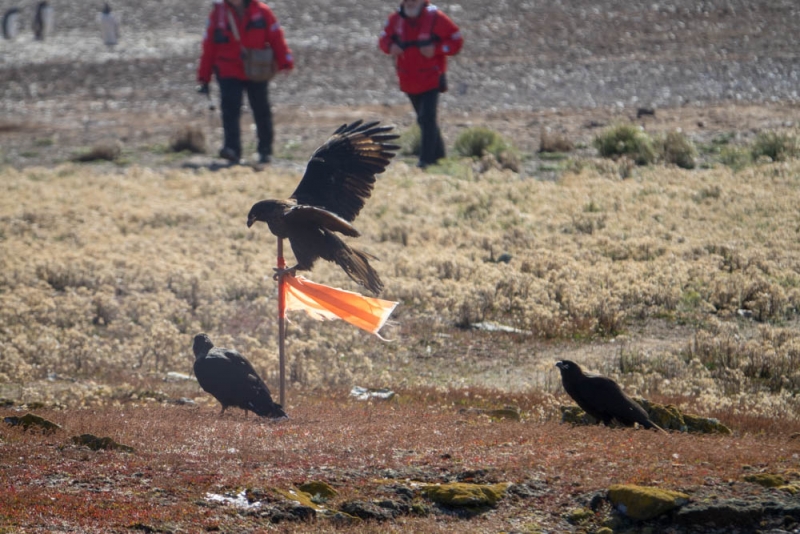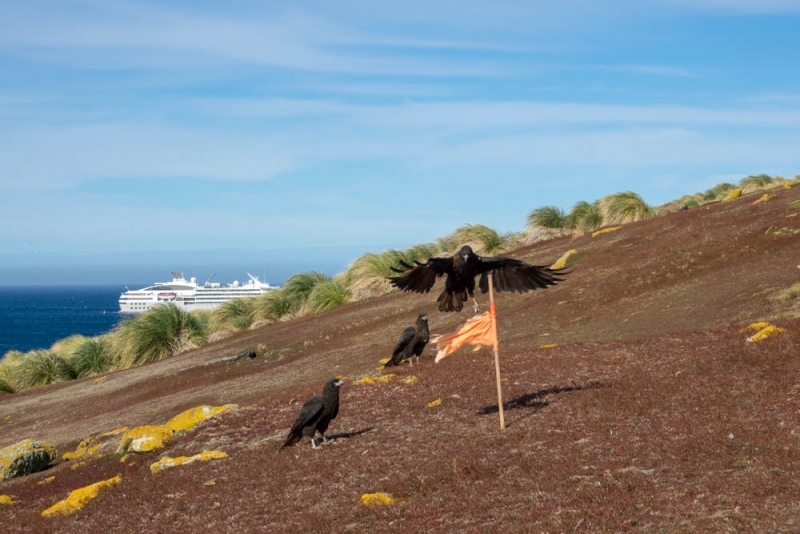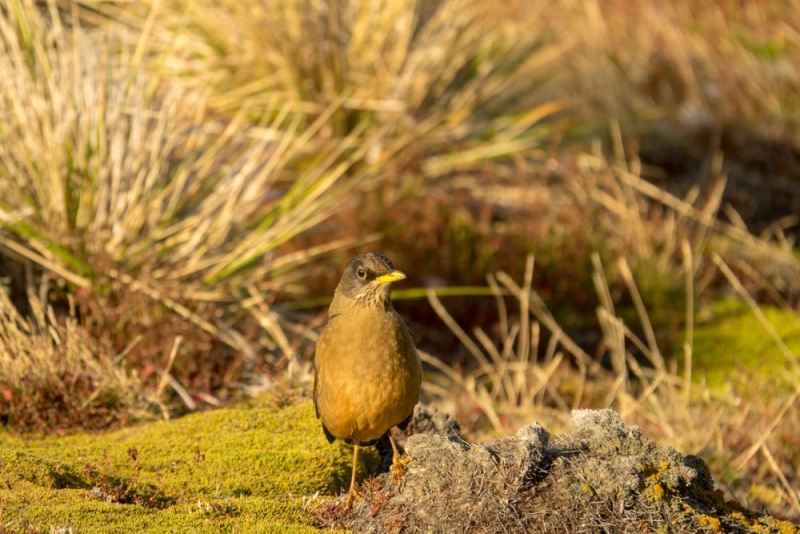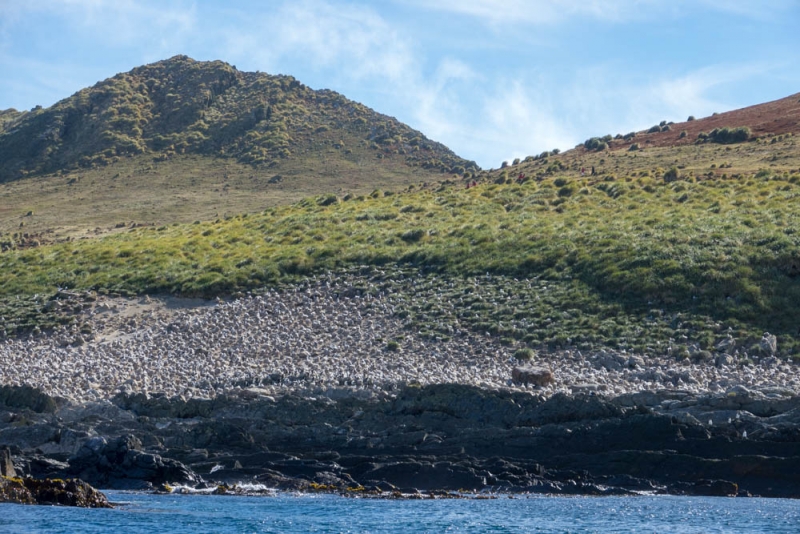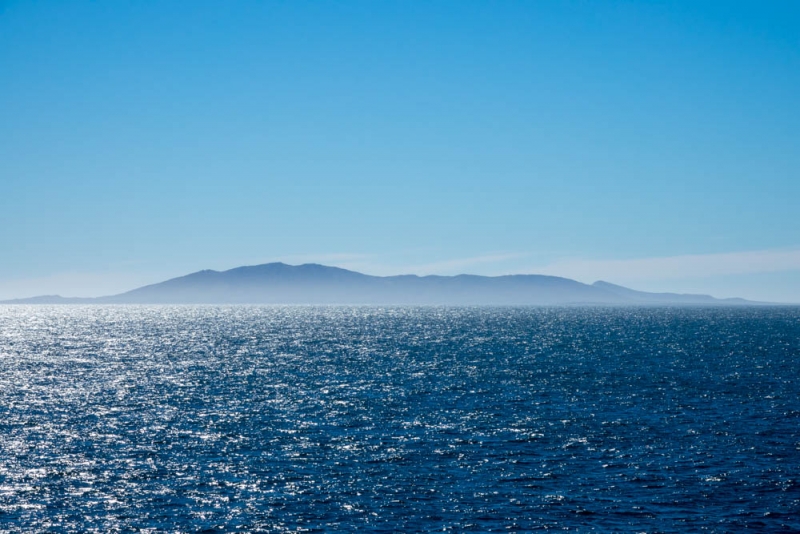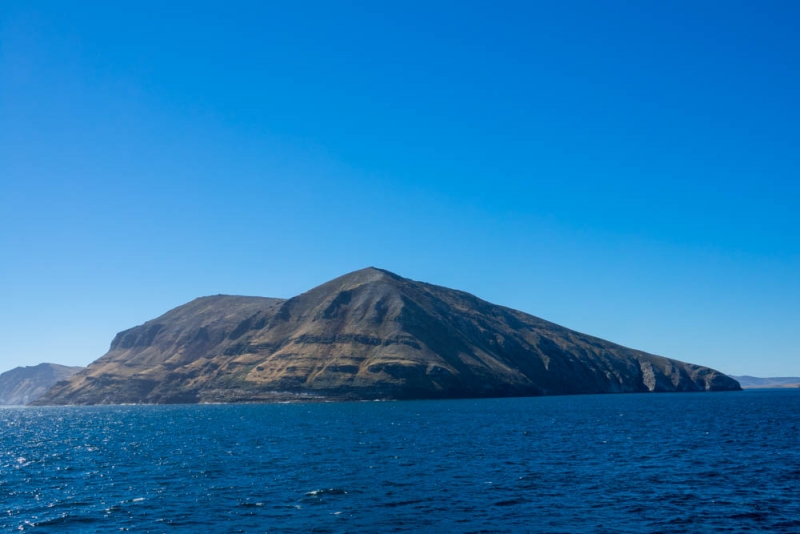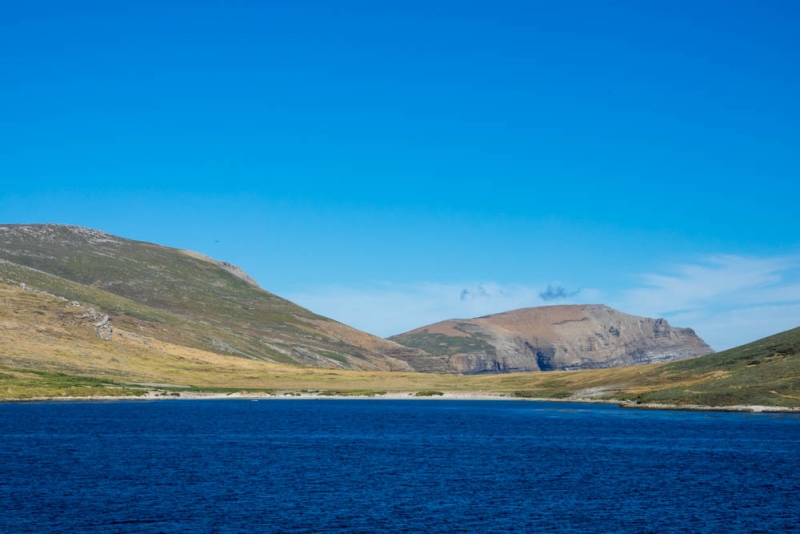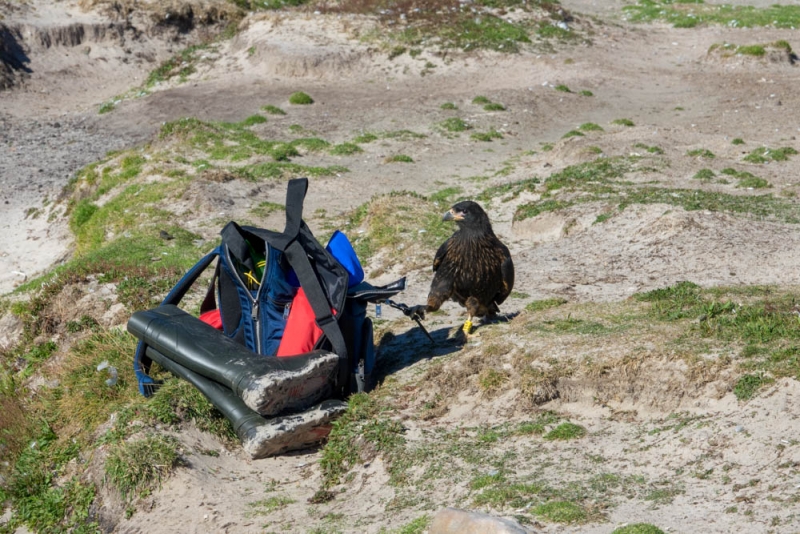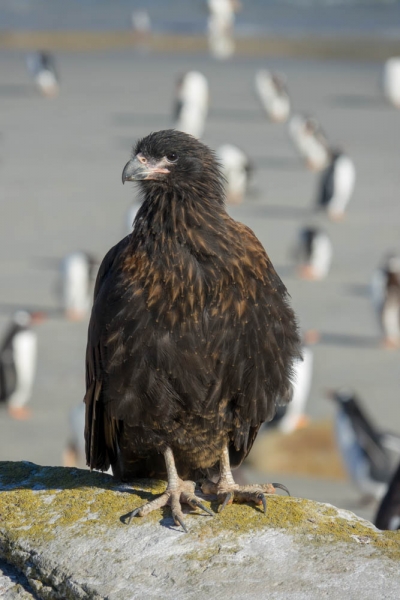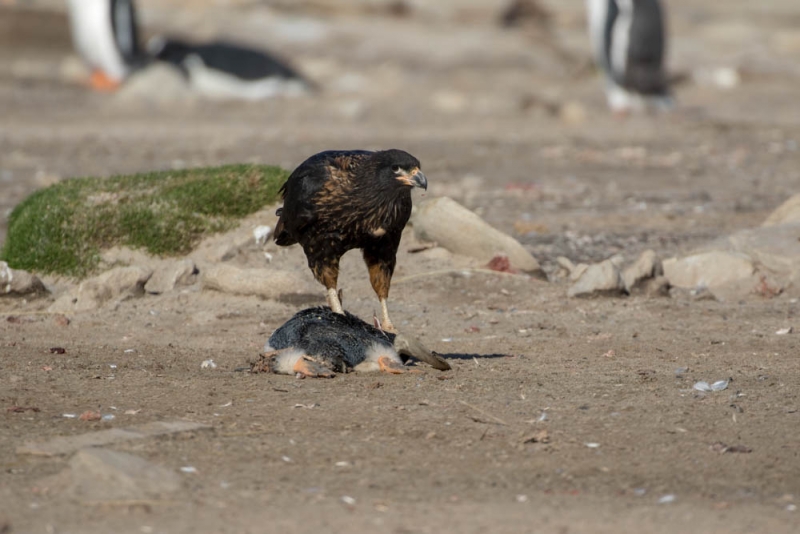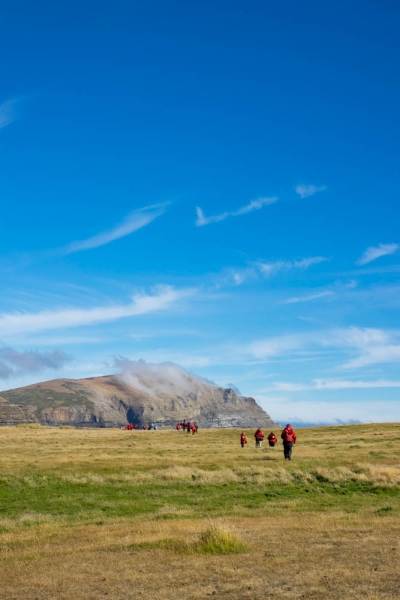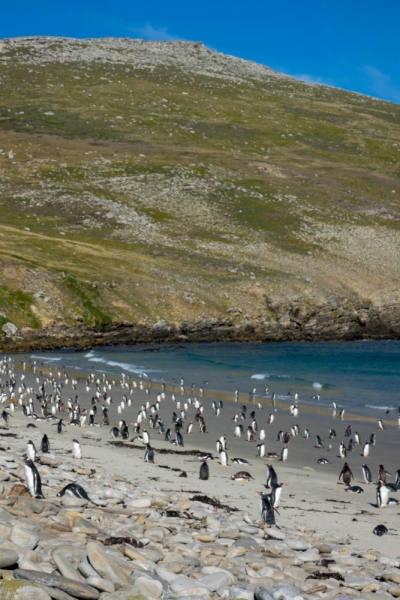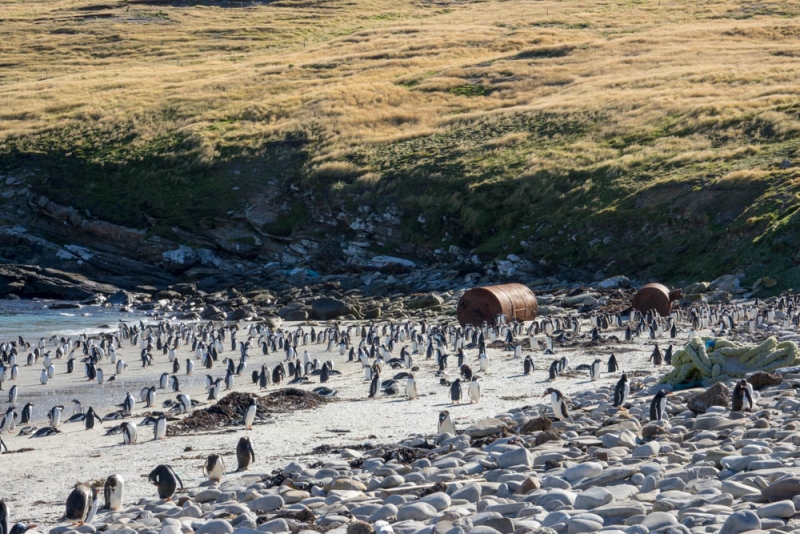Steeple Jason Island
The anchor drops at Steeple Jason Island in the Falklands around 6am, and we awake to a spectacular day. The weather forecast is for 10 degrees Celsius in the morning, and 11 degrees in the afternoon. Steeple Jason has two attractions – it is home to the largest black-browed albatross colony in the world, with between 100,000 and 150,000 pairs here, and it is also home to the striated caracara, a very tame, fearless thief of a scavenging bird that will steal anything that is not secured – hats, gloves, flag posts, anything they can carry. Which is quite a bit – their claws are large and they will cheerfully drag prizes their own body weight along the ground if it is too heavy to fly away with. The islanders hate them for making off with washing from the line. Anything flapping in the wind is an easy target for these intelligent birds that are about the size of an wedge-tailed eagle.
It’s a tricky landing onto slippery rocks, with towels and mats laid out on rocks, but it still needs a team of naturalists along the way to help the passengers up the narrow slippery slope. Apparently, there are the usual falls and scrapes. It’s about 1.5km from the landing site up a gentle slope to reach the albatross colony.
I was last here in October 2010, when the albatrosses were laying their eggs. This time, the chicks are about a month away from fledging, some still grey or white balls of fluff, others showing signs of their adult feathers. All spend a good amount of time flapping and stretching their wings while waiting for a parent to return with a meal.
The caracaras are making short work of the flags planted to mark the path for the passengers to follow – I retrieve the flag from one group of 3 caracaras that have managed to pull it out of the ground and make off with it. Further on, another group are hard at work trying to claim a second flag.
There are a few small birds fossicking around the albatross colony, notably the small dark tussock bird, and the well-camouflaged Austral Thrush.
A short zodiac cruise on the way back to Le Lyrial provides another view of the colony.
The plan for this afternoon is a mid-late afternoon landing at Grave Cove.
Grave Cove
It’s short sail to Grave Cove, still under sunny, unseasonably warm weather, where we arrive at 2pm. Privately owned by a French couple that took over Dunbar Farm, Marie-Paul and her husband are sailors turned farmers, and Marie-Paul provides an entertaining account of her life in the sparsely inhabited West Falklands later on board Le Lyrial.
Grave Cove is named for some early graves visible on the side of the cove. It is also home to a good population of Commerson’s Dolphins, which are attracted to the ship and zodiacs and zoom around as we are embarking the zodiacs.
The main attraction of Grave Cove is the Gentoo penguin colony. At this stage of the season, the chicks are almost independent, and are advanced with their adult plumage. Caracaras are plentiful, busy trying to steal a backpack, and cleaning up the remains of a dead Gentoo.
The sunny conditions persist all afternoon, making for a pleasant easy walk around this location.
This is my fourth visit to the Falkands, and I haven’t seen these kind of blue skies and stable conditions for so long. Hopefully they persist for tomorrow’s planned visits to West Point and Saunders Island.

